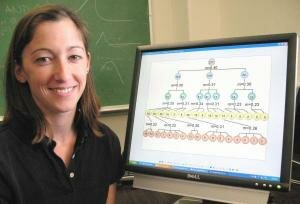Brains, Worms and Computer Chips Have Striking Similarities
An international team of scientists has discovered striking similarities between the human brain, the nervous system of a worm, and a computer chip.
The finding is reported in the journal PLoS Computational Biology.
"Brains are often compared to computers, but apart from the trivial fact that both process information using a complex pattern of connections in a physical space, it has been unclear whether this is more than just a metaphor," said Danielle Bassett, first author and a postdoctoral research associate in the Department of Physics at UC Santa Barbara.
The team of scientists from the U.S., the U.K., and Germany has uncovered novel quantitative organizational principles that underlie the network organizations of the human brain, high performance computer circuits, and the nervous system of the worm, known as nematode C. elegans. Using data that is largely in the public domain, including magnetic resonance imaging data from human brains, a map of the nematode's nervous system, and a standard computer chip, they examined how the elements in each system are networked together.
They found that all three shared two basic properties. First, the human brain, the nematode's nervous system, and the computer chip all have a Russian doll-like architecture, with the same patterns repeating over and over again at different scales.
Second, all three showed what is known as Rent's scaling, a rule used to describe the relationship between the number of elements in a given area and the number of links between them.

"This is Danielle Bassett with a depiction of the neuronal system of the nematode worm, C. elegans. (Credit: George Foulsham, Office of Public Affairs, UCSB)"
Source: University of California - Santa Barbara
|